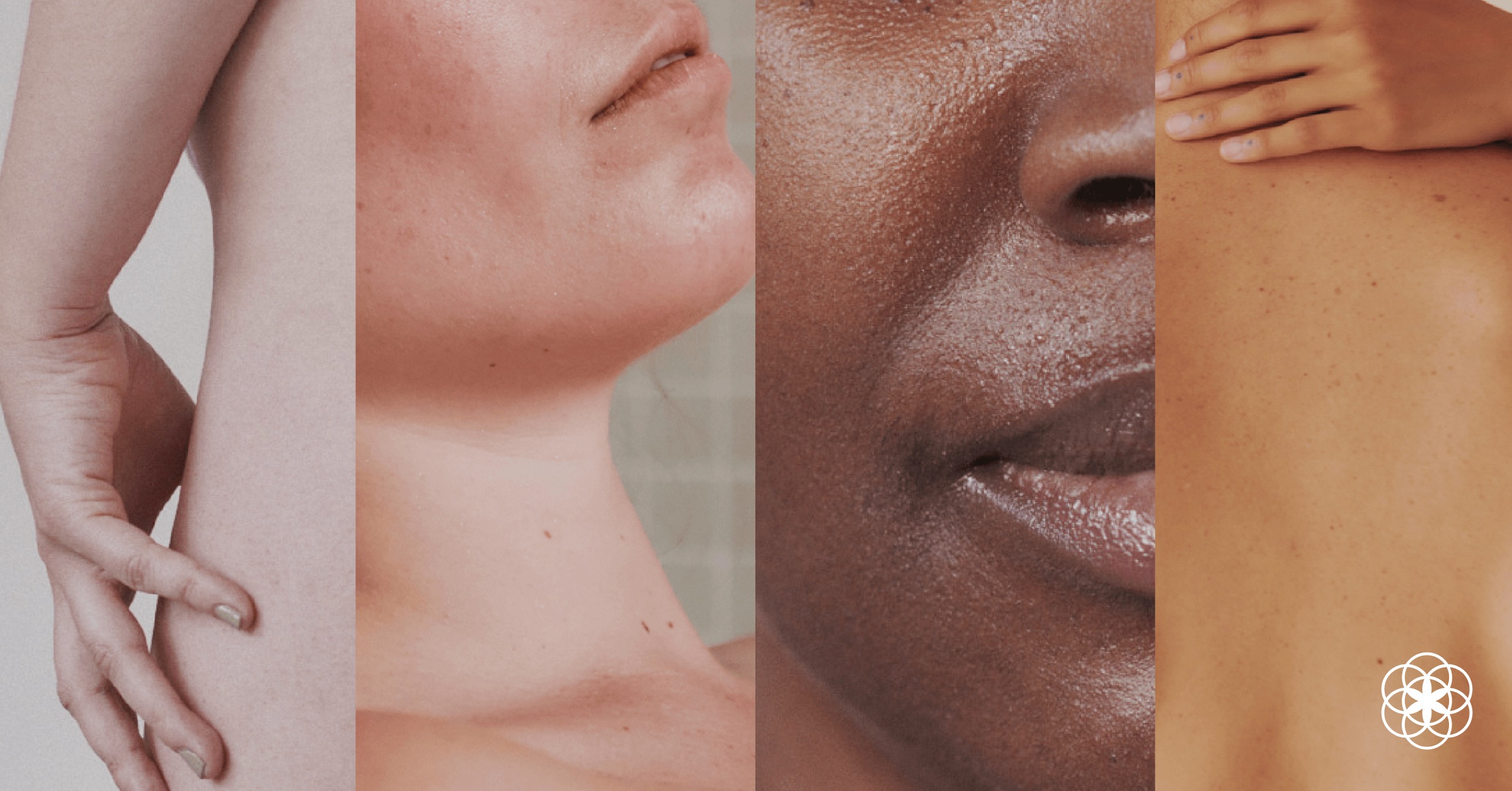Have you ever wondered why your skin suddenly feels oilier or why breakouts seem to come out of nowhere? The secret often lies deep inside your body—in your hormones.
Hormones play a powerful role in controlling how much sebum your skin produces. Sebum, the natural oil your skin makes, keeps your skin hydrated and protected. But when hormone levels shift, they can trigger your sebaceous glands to go into overdrive, leading to oily skin and even acne.
Understanding how hormones affect sebum production can help you take better control of your skin’s health. Keep reading to discover which hormones are behind this process and what that means for your skin care routine.
Androgens And Sebum Boost
Androgens play a key role in boosting sebum production. These hormones trigger sebaceous glands to create more oil. Increased sebum can lead to oily skin and sometimes acne. Understanding how androgens affect sebum helps explain changes in skin during puberty and hormonal shifts.
Testosterone’s Role
Testosterone is a main androgen hormone that stimulates sebum production. It binds to receptors in sebaceous glands. This binding signals glands to increase oil secretion. Testosterone levels rise during puberty, causing oily skin in many teenagers. Both males and females produce testosterone, but males generally have higher levels.
Dht Impact On Glands
Dihydrotestosterone (DHT) is a powerful form of testosterone. It binds more strongly to sebaceous gland receptors. DHT increases oil production more than testosterone alone. This hormone can cause glands to enlarge and become more active. Elevated DHT levels often lead to excessive sebum and skin issues.
Sensitivity Of Sebaceous Glands
Sebaceous glands vary in how sensitive they are to androgens. Some glands react strongly even to normal hormone levels. This sensitivity causes more sebum production and oiliness. Genetic factors often influence gland sensitivity. Sensitive glands can worsen skin conditions like acne.

Credit: www.honestyforyourskin.co.uk
Stress Hormones And Oil Increase
Stress can trigger the release of specific hormones that impact sebum production. These hormones prepare the body to handle pressure but also affect skin oil levels. Understanding how stress hormones influence sebum can explain why skin becomes oilier during tough times.
Cortisol Effects
Cortisol is the main stress hormone released by the adrenal glands. It helps the body manage stress by increasing energy supplies. Cortisol also signals sebaceous glands to produce more sebum. Higher cortisol levels often lead to increased oil on the skin. This can cause pores to clog and raise the risk of acne breakouts.
Stress-induced Sebum Changes
During stress, sebum production often rises sharply. This happens because stress hormones affect the skin’s oil glands directly. The glands become more active and secrete extra oil. This change can make the skin feel greasy and look shiny. Long-term stress may worsen oily skin and acne problems. Managing stress helps keep sebum levels balanced and the skin healthier.
Estrogen’s Influence On Skin
Estrogen plays a vital role in maintaining healthy skin. It influences how the skin produces oil and retains moisture. This hormone helps keep the skin smooth and elastic. Changes in estrogen levels can affect sebum production and skin condition. Understanding estrogen’s impact helps explain skin changes during different life stages.
Skin Thickness And Moisture
Estrogen supports the production of collagen, a protein that keeps skin firm. It also boosts skin thickness by encouraging new cell growth. Thicker skin is less prone to damage and wrinkles. Estrogen helps skin hold moisture, preventing dryness. Balanced moisture levels keep the skin soft and supple.
Age-related Hormone Decline
As people age, estrogen levels naturally drop. This decline causes the skin to thin and lose moisture. Lower estrogen can reduce collagen production, leading to wrinkles. The skin may become drier and more fragile over time. These changes often increase sebum imbalance and skin sensitivity.

Credit: helloclue.com
Complex Role Of Progesterone
Progesterone plays a complex role in controlling sebum production. It can both increase and decrease oil levels in the skin. Its effects depend on various factors, including hormone balance and enzyme activity. Understanding this dual role helps explain why skin conditions change at different times, such as during menstrual cycles or pregnancy.
Sebum Production Modulation
Progesterone can reduce sebum production by blocking androgen receptors. This action lowers the stimulation of sebaceous glands. At the same time, progesterone may indirectly promote sebum by affecting hormone levels. These mixed effects make its influence on skin oil quite unique. The balance between progesterone and androgens often determines overall sebum output.
Enzyme Interaction Effects
Progesterone interacts with enzymes that control sebum synthesis. It can inhibit 5-alpha reductase, an enzyme that converts testosterone to DHT. DHT is a strong stimulator of oil production. By reducing DHT levels, progesterone helps lower sebum secretion. This enzyme interaction is a key reason why progesterone can calm oily skin in some cases.
Other Hormonal Factors
Beyond androgens and cortisol, several other hormones affect sebum production. These hormones influence the skin’s oil balance and overall health. Their roles may seem subtle but are important for understanding skin changes.
Growth Hormone Contributions
Growth hormone plays a key role in skin health and sebum control. It stimulates cell growth and repair in skin tissues. This hormone also influences the size and activity of sebaceous glands. Higher growth hormone levels can increase sebum production. This helps maintain skin moisture but may lead to oily skin if levels are too high. Growth hormone also supports collagen production, which keeps skin firm and elastic.
Thyroid Hormone Impact
Thyroid hormones regulate metabolism and affect skin condition. When thyroid levels are low, skin may become dry and flaky. This dryness happens because low thyroid hormone reduces sebum secretion. On the other hand, excess thyroid hormone can increase sebum production. This may cause oily and shiny skin. Thyroid imbalances can also slow down skin cell turnover. Proper thyroid function is essential for balanced sebum output and healthy skin.

Credit: www.getlabtest.com
Frequently Asked Questions
What Hormone Causes Sebum Production?
Androgens, especially testosterone and dihydrotestosterone (DHT), primarily cause sebum production by stimulating sebaceous glands.
What Hormone Imbalance Causes Oily Skin?
Androgen hormones, especially testosterone and dihydrotestosterone (DHT), cause oily skin by increasing sebum production. Cortisol, a stress hormone, can also raise oil levels. An imbalance or sensitivity to these hormones leads to excessive oil secretion and oily skin.
How To Control Hormonal Sebum Production?
Control hormonal sebum by maintaining balanced hormones through diet, stress management, and skincare. Consult a dermatologist for targeted treatments.
How Does Cortisol Increase Sebum Production?
Cortisol increases sebum production by stimulating sebaceous glands during stress. This hormone enhances oil secretion, potentially worsening acne.
What Hormone Mainly Controls Sebum Production In The Skin?
Androgens, like testosterone and dihydrotestosterone (DHT), mainly control sebum production by activating sebaceous glands.
How Does Stress Hormone Affect Sebum Production?
Cortisol, the stress hormone, increases sebum secretion and can worsen oily skin and acne.
Conclusion
Hormones have a strong impact on sebum production in the skin. Androgens like testosterone increase oil output by activating sebaceous glands. Stress hormones, such as cortisol, also raise sebum levels. Changes in estrogen and progesterone influence skin moisture and oil balance.
Understanding these hormonal effects helps explain why some people have oily or dry skin. Managing hormone levels may support healthier skin and reduce breakouts. Paying attention to hormone-related changes can guide better skincare choices.
 Skip to content
Skip to content 